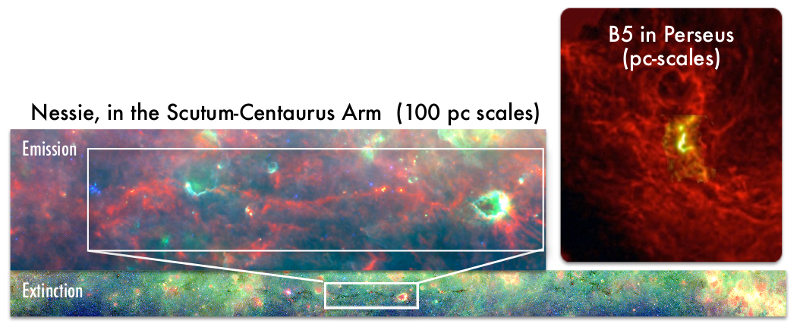| EPoS Contribution |
|
Does Matter in Filaments Matter?
Alyssa Goodman Harvard-Smithsonian CfA, Cambridge, US | |
|
The typical textbook picture of star formation still shows blobs forming disks forming stars with planets. And, somehow, until very recently, most researchers ignored the potential significance of the filaments obvious on large scales in star-forming regions (seen 100 years ago in Barnard's images; named by Lynds in the 1960s; found everywhere in IRAS images; and prevalent in the past two decades of numerical simulations). Only the pile up of hundreds of stunning Spitzer and Herschel images in the 2000s seems to have forced astronomers (including me) to give more attention to the plethora of filaments in star-forming regions.
In this talk, I will consider the potential importance of filaments in dense gas on two very different scales. I will explain how very long, very thin (aspect ratio >100:1), infrared dark clouds like the so-called "Nessie" feature likely offer a new way to measure the structure of the Milky Way. And, I will show that the B5 star forming region in Perseus offers a glimpse of how tiny (~0.01 pc-scale) fragmenting filaments responsible for the formation of a young stellar cluster may be topologically connected to filaments on scales hundreds of times larger. In discussing these findings, I will demonstrate how and why new software and statistical techniques were developed and used in our work. | |
 | |
| Caption: Filaments on LARGE and SMALL scales in Star-Forming Regions: Nessie and B5 | |
| Collaborators: J. Pineda, MPE, DE H. Chen, CfA, US C. Zucker, CfA, US C. Battersby, CfA, US T. Rice, U. Michigan, US |
Suggested Session:
Filaments |

